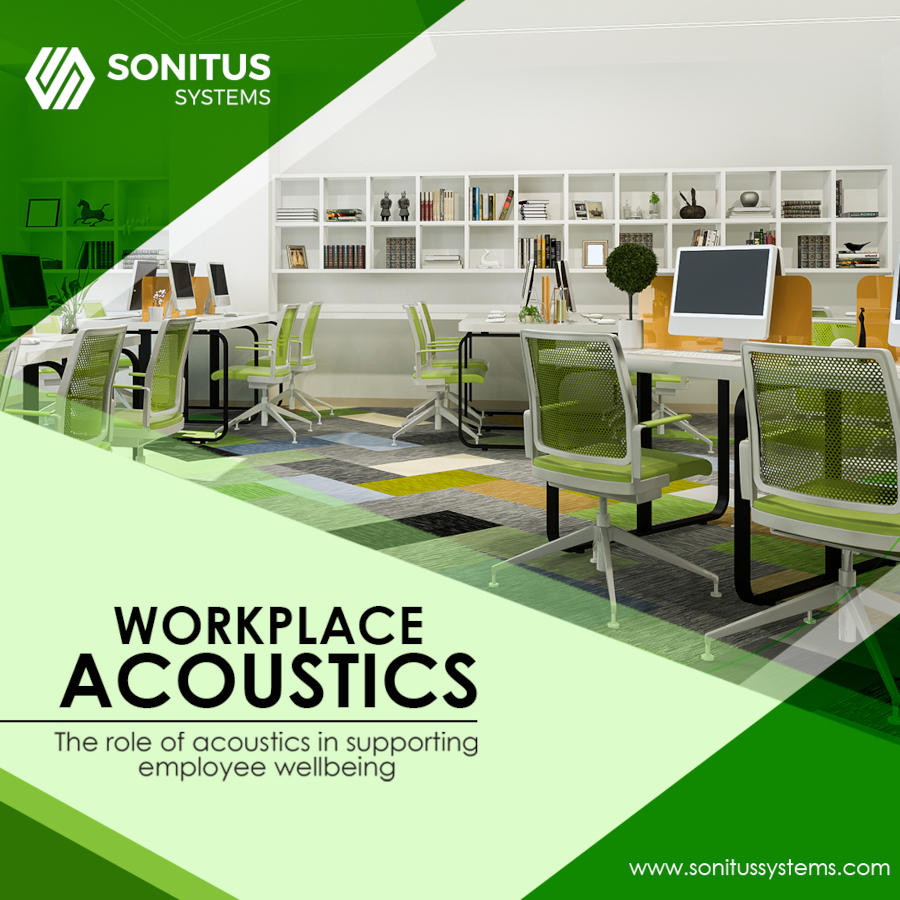Tackling noise in the workplace comes down to understanding the basic principles of effective acoustics and incorporating these into interior design and fitout materials.
Last month we wrote about The Evolving Role of Buildings in Supporting Health & Wellbeing, and it is indeed an evolving role as it is still unclear what lasting impact the current pandemic will have on our buildings and workplaces. Workplace fitout trends of recent years, including open place offices and zoned collaboration spaces designed to remove barriers between colleagues, are now at odds with the pandemic-responsive, public health guidelines on safety and social distancing. Interestingly, while Covid-19 will likely be heralded as the end of the ubiquitous open plan office in its current form, this design was actually coming under growing criticism prior to the outbreak. A series of studies and reports in recent years found that open plan is not conducive to employee health and productivity, with one particular brain activity monitoring study finding that employees are up to 66% less productive when exposed to just one nearby conversation. As mentioned here previously, The Economist recently reported that
‘Noise levels in the office may be the main cause of workplace misery‘ as, in addition to being irritating, it interrupts concentration flow. Also, according to the 2019 ‘What’s That Sound?’ Workplace Acoustics Study from Interface, noisy offices increase levels of stress and anxiety for employees. And noise-cancelling headphones are not the solution, neither is a return to the low, grim cubicle layout of the 1980s. Understanding and accepting that excessive unwanted noise has a significant, negative impact on the well-being and productivity of occupants within the workplace, what is the right solution?
Tackling noise in the workplace comes down to understanding the basic principles of effective acoustics and incorporating these into interior design and fitout materials. It is important to point out that abject silence is not the solution and, therefore, not the goal of this exercise. The nuanced engineering challenge is to balance and control noise, this is where the knowledge and expertise of the Sonitus Systems team can assist.
Workplace sounds have a certain frequency – low, medium and high – and issues of unwanted noise or acoustic discomfort typically occur when there is an imbalance of low, medium or high frequency noise. Managing interior or workplace noise involves utilising a range of acoustical design measures to absorb human chatter and not allow it to reverberate off of hard surfaces. This might involve absorptive floor, wall and/or ceiling-mounted panels. Through acoustical engineering design, workplace sounds can be diffused or dispersed across an area to create balance. Achieving this is vital to optimising employee health and wellbeing. There are acceptable ranges and sound levels within a workplace, however, prolonged exposure to unwanted or excessive noise – no louder than a home dishwasher machine – has a detrimental impact on health and has been proven to cause a psychological stress response in humans, which can result in blood pressure and heart rate spikes. At home, people can make decisions around noise to some degree, however, within the workplace, this falls to the employer, placing acoustics and noise management at the top of the wellbeing in work agenda.
Sonitus Systems offers both the hardware and software for measuring a range of environmental parameters on a continual basis, with real-time information available through our Sonitus Cloud dashboard. For more details on our indoor and outdoor noise and air quality monitoring products and services, please contact the team at www.sonitussystems.com/contact/contact.html
